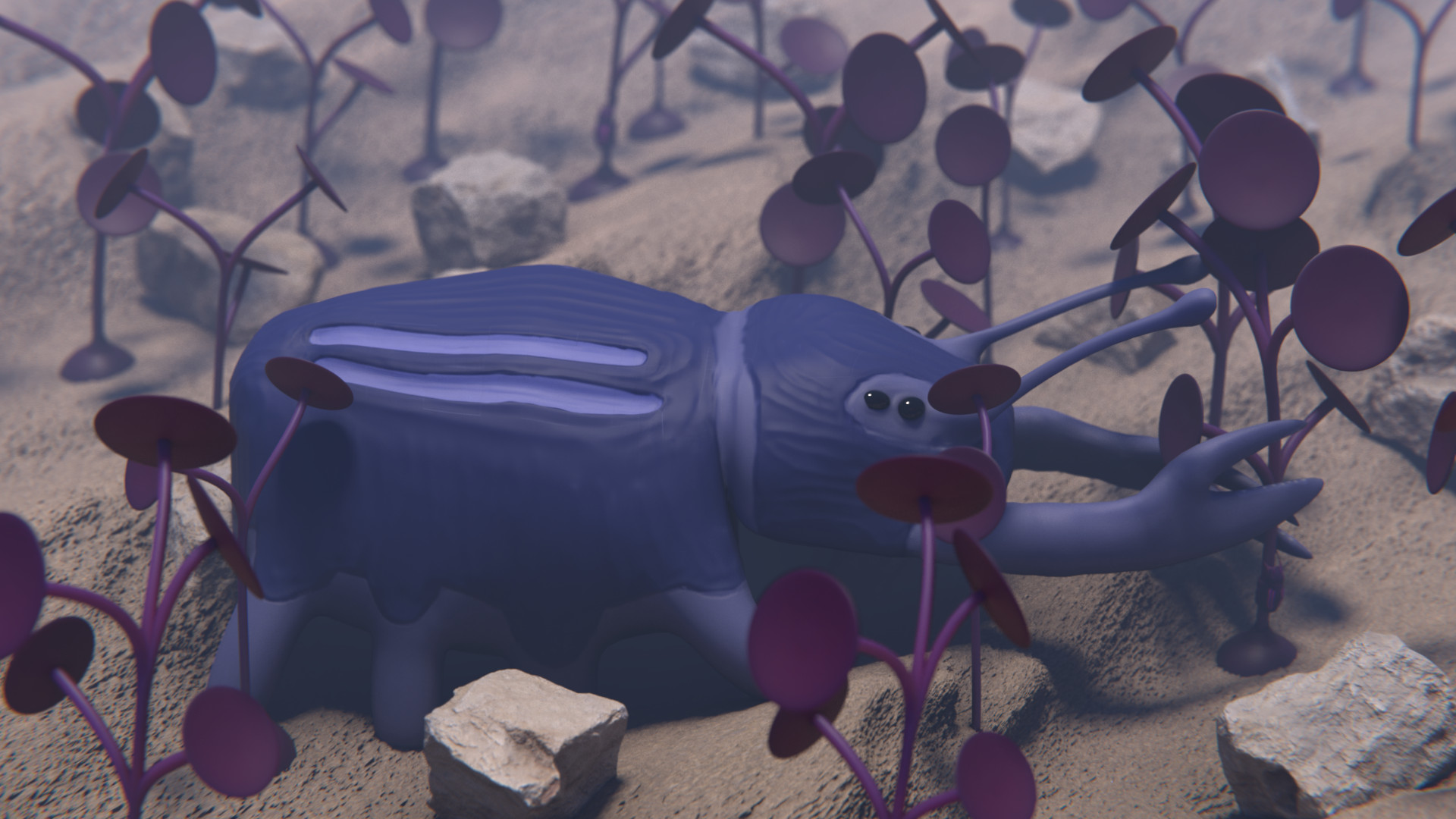Durospina
Durospina is a large herbivore growing up to 20 cm long. It has evolved a hard shell on top of its body. It moves slowly, but is sturdy and strong.
[creature design by Kipzilla]
Basic Information
Anatomy
The four cephalic appendages of dyomisa have evolved into a pair of claws with calcified "teeth" and a pair of sensory antennae. The claws are used to cut food items into smaller parts so they can be easily eaten. The antennae help locate food and are sensitive to pressure changes, which assists in noticing predators. When threatened the durospina can tuck its pseudopods under it's shell and partially curl up, it will then lash out with its claws. The shell is made of keratinized dead cells. This makes it so that the younger durospinas don't have as much protection. Durospina can cover nearly all of its body when it curls and tucks its legs.
Genetics and Reproduction
Durospina release eggs in a hole dug near food, usually a boseo magno tuber. Durospina are true hermaphrodites, and a pair will usually dig two separate nest holes, one for each to release eggs into, which the other will then fertilize.
Ecology and Habitats
Durospina eats food such as retinalphytes and opportunistically will eat phytozoans as well. It is preyed on by probosignathids. Durospina can only be found in the shallowest waters where boseo magno can also be found, and it is excluded from the coldest waters near Arctica.
Dietary Needs and Habits
Durospina must consume large amounts of food, and so it is always either moving, eating, or mating, except for a few hours each day when it hides under rocks to sleep.
Additional Information
Perception and Sensory Capabilities
Dursopina's antennae are sensitive to touch, pressure, temperature, and are chemoreceptors. Its eyes have some limited image forming ability, and are an additional aid in detecting both food and predators.
EXTINCT
Genetic Ancestor(s)
Genetic Descendants
Scientific Name
Dyamosa durospina
Origin/Ancestry
Xenotagmata
Lifespan
5 local years
Average Length
20 cm
Remove these ads. Join the Worldbuilders Guild











Comments